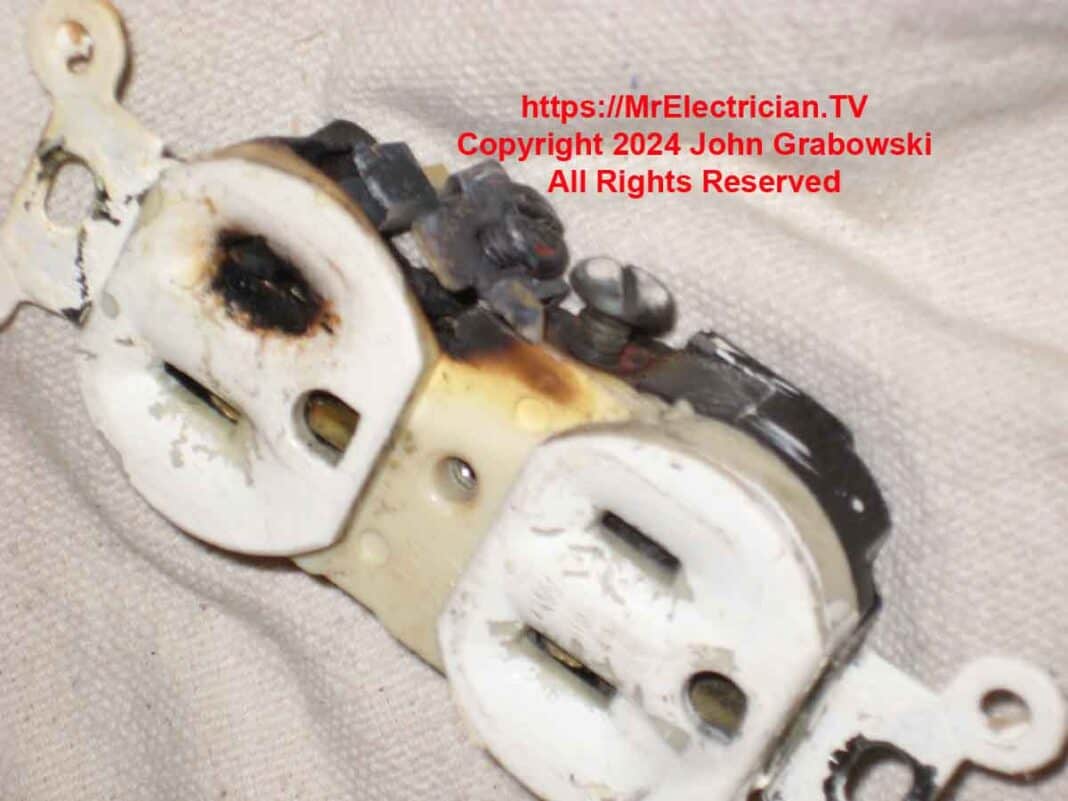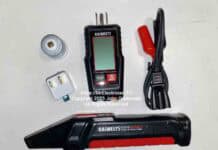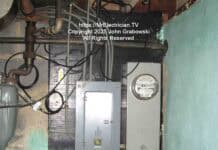Dear Mr. Electrician: What would cause some of my electrical outlets, that I installed years ago to burn the wires on the screw terminals?
Answer: A common cause of burned screw terminals on an electrical outlet is loose connections.
NOTE: Some text links below go to relevant products on Amazon. As an Amazon Associate, I earn from qualifying purchases. Using my links helps to keep this website FREE.
Electrical connections must be tight! If they are not, when there is a load there will be sparks and heat generated. The larger the load, such as an electric heater, the greater the sparks and heat.
To satisfy the electrical code requirements that terminal screws on wiring devices are tightened properly, a torque screwdriver must be used. The device manufacturer provides the torque information in the device packaging.
To pass an electrical inspection, the device screws must be torqued to the manufacturer’s requirements, then the installer puts a mark on the screws to indicate that they have been torqued. A permanent ink marker can be used for this.
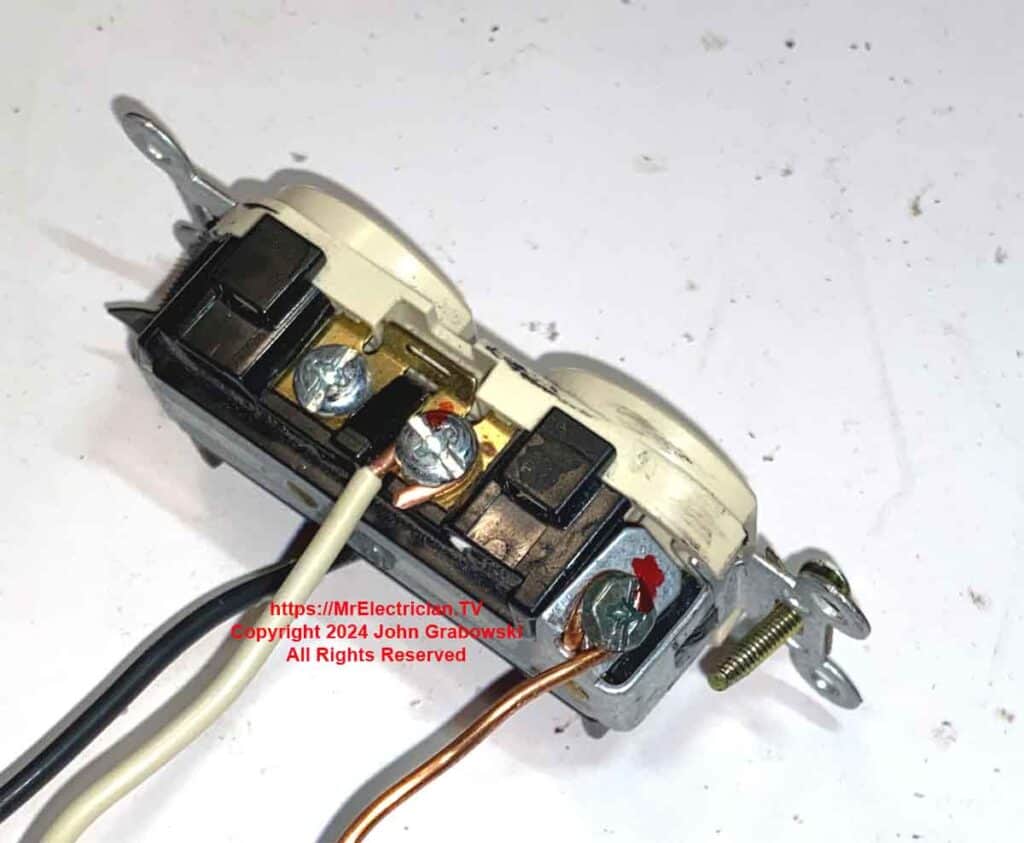
On the electrical outlet above, the number 12 solid copper wires are looped tightly around the terminal screws. Notice that the bare copper ground wire was inserted in a small hole and then wrapped around the green screw. The terminal screws were marked with a red Sharpie marker to indicate that they had been properly torqued.
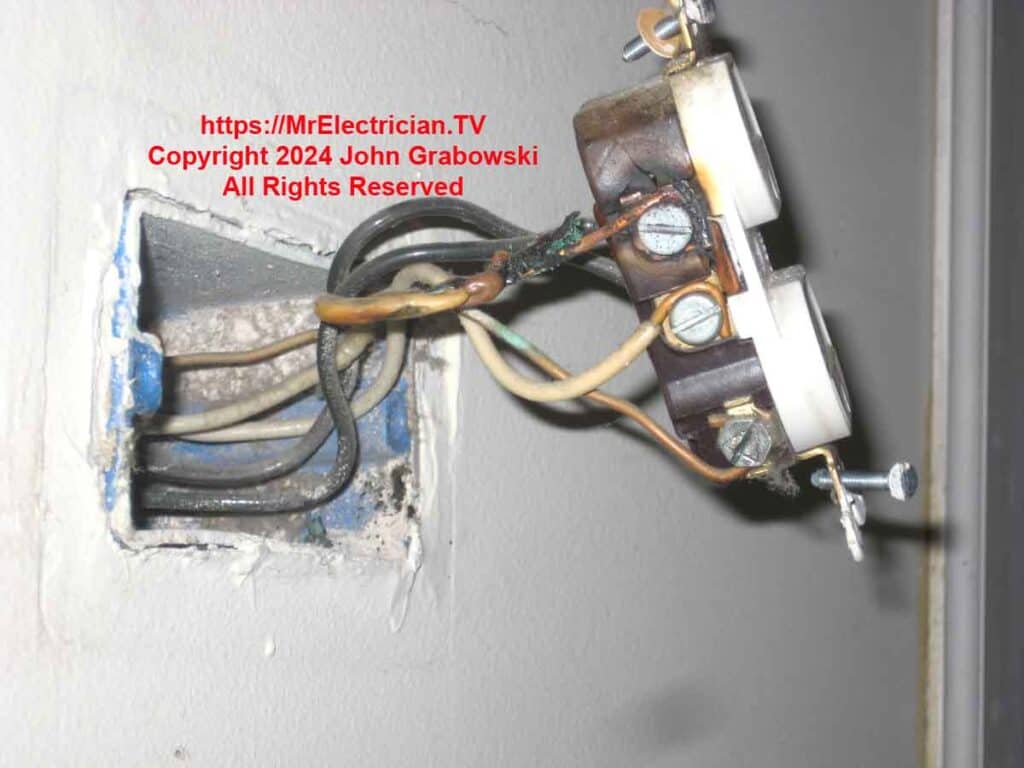
In the example above of a burned outlet and wire, it is obvious that whoever installed the outlet was not a professional. The wire under the green screw is backward. The bare ground wire loop should be positioned on the green screw so that the loop closes when the screw is tightened. The other wires are incorrectly positioned under the screws.
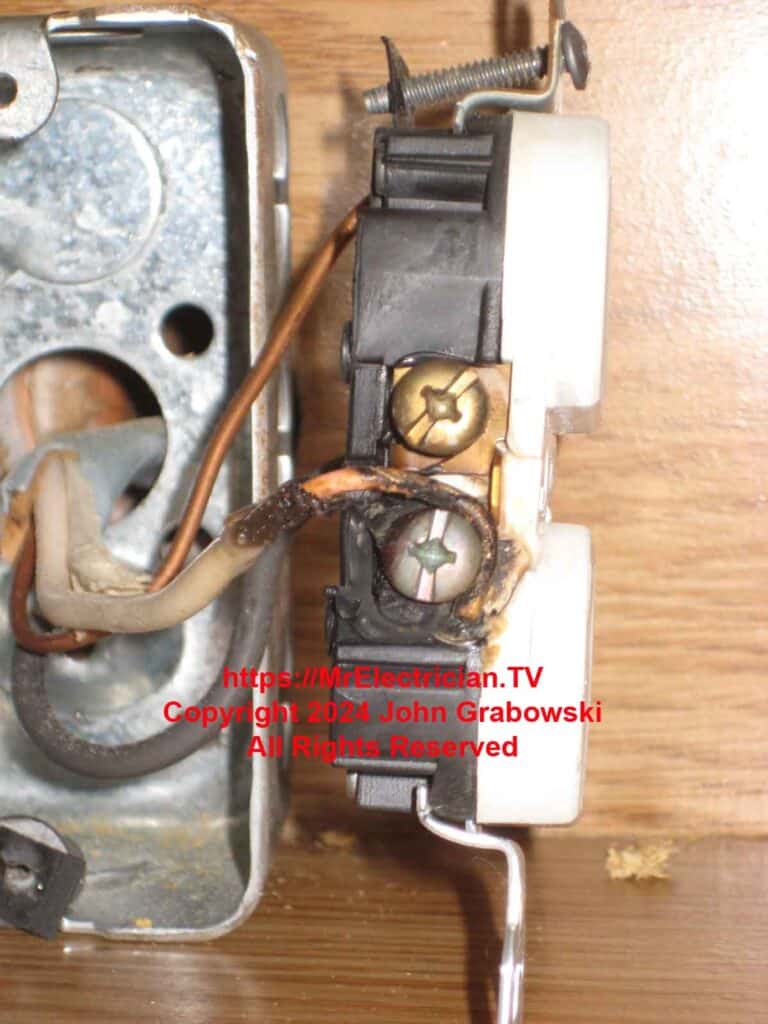
The outlet in the photo above was not professionally installed. There is no connector for the cable entering the rear of the metal electrical box. The bare copper grounding conductor is not attached to the box to ensure that the box is grounded. The white wire was not looped correctly under the screw and probably not tight, leading to a burned electrical outlet.
The examples of burned electrical outlets above each had most of the ingredients to potentially start a fire. There was heat, sparks, and oxygen. They just needed a little fuel to ignite into flames.
Another cause of a burned outlet or wiring is an overloaded circuit. In a normal home that is wired correctly, when a circuit is overloaded the circuit breaker will trip or the fuse will blow out. Originally installed circuit breakers and fuses are sized to the wire and equipment that they protect.
However, in some homes, especially older housing, where the wiring was installed by unqualified workers during renovations, you could have a mix of wire types and sizes that may not be suitable for the circuit. In addition, the fuse or circuit breaker could be too big for the wire sizes. This can cause a burned electrical outlet and a fire.
When a circuit is overloaded, all things heat up and burn, not just the loose electrical connections.
Read my article about flickering lights as that can be caused by loose or burned electrical outlet connections.
To help keep this website free, please use this Amazon link for your purchases. As an Amazon Associate, I earn from qualifying purchases.
Click here for a FREE copy of my book “Almost Everything You Need To Know To Repair a Bathroom Exhaust Fan In Your Home.”
Get your required “Emergency Disconnect, Service Disconnect” labels and stickers to satisfy the 2023 National Electrical Code requirements in article 230.85(E)(1) by going to my Zazzle Shop here.
Visit my Link Tree for links to my social media and merchandise.
